Product Review: Interco Tires Super Swamper SSR 37x12.50x16.5
You drive a big truck, you want big tires, right?
Well maybe, maybe not. Let's do some math...
An F350 diesel 4x4 like mine tips the scales at over 8,000 lbs. with full tanks and a driver. About 5,000 lbs. is on the front axle, about 3,200 lbs. is on the rear. Those really cool 35"-38" tires you just got laid away on at the local four wheel drive shop to the tune of $1000-$1600 or more, look great, but do they do the job?
Chances are they are load range "C" or at the very most, load range "D". Fine for a 1/2 ton truck or SUV, but when it comes to your 3/4 or 1 ton tow rig. Forget it! A "C" rated tire is built for an approximate load of 2,500 lbs. at about 32-35 psi. Since the front axle of my F350 is carrying 5,000 lbs. that means when I stop at 7-11 for a six-pack, I'm overloaded...
A "D" rated tire at about 3,300 lbs. at 45-50 psi ain't much better. My 40ft 5th wheel weighs 3,300 lbs. at the hitch pin, plus the hitch, firewood, coolers, a couple of gas cans and a toolbox, we're up to about 4,000 lbs. A load which a one ton truck's suspension can handle with ease. Add that 4,000 lbs. to the 3,000 lbs. the rear of the truck weighs and you've got a problem. Even with a "D" rated tire you are as much as 1,000 lbs. overloaded.
A tire is basically a balloon that holds air. The bigger the load the more air pressure you need to support it. The limiting factor a tire has is it's ability to contain pressurized air and to withstand as well as dissipate heat. The bigger your load and the faster your road speed, the more heat is generated. This is also magnified by tire flex and outside air/road surface temperature (Ever notice the thousands of blown tires along the highways in the desert?).
What it boils down to
has happened to me a dozen times. As the tread wears on my 35" load
range "D" tires to about 50%, its ability to dissipate heat is
reduced dramatically. The tread lugs work like the cooling fins on
a radiator, giving a tire more surface area. As the tire loses its
ability to to shed the heat of being overloaded three things
begin to happen:
-
The tread begins to separate from the carcass.
-
The carcass begins to shear and the cords/plies separate.
-
The tire becomes distorted or "out of round."
Obviously any or all of these conditions will lead to more flex, more heat generated and to premature and probably catastrophic tire failure. If you've ever had the tread separate from a 38x15.50R16.5 tire at 70+ mph, you know what a 70 lb. piece of rubber ten feet long and 16" wide can do...
Every tire I've ran, regardless of manufacturer has done the same thing. At 50% of tread wear, the carcass splits apart or the tread separates, while towing! Never empty, never on the way to the Safeway, always towing under a load...
Now There Is a Solution!
Interco Tires of Rayne Louisiana has been THE pioneer in big tire R&D. With more ground breaking and trend setting tire innovations than any other company in this market, their products are more than well known, in fact they set the standard for performance. From their special purpose Bogger line of mud tires to their TSL Swampers and Thornbirds. Unlike the other tire manufactures whose business is based in passenger car tires, Interco is the only company whose entire business is manufacturing big tires for off road applications.
Now with another first, Interco is about to release a tire that the market place has been screaming for...
The Super Swamper SSR 37x12.50R16.5LT in a load range "E." You heard me right gang, finally a set of really big shoes can be obtained with a rating that fits applications for lifted 3/4 and one ton trucks. Rated at 4,540 lbs. at 65 psi, these tires have the brawn to be able to carry the loads you bought your truck to handle.
After having Big O Tires here in Las Vegas mount up a set of the SSRs on my F350. I had the opportunity to take my 40ft 5th wheel on a 600 mile round trip to the Glamis Sand Dunes for the Thanksgiving Pilgrimage (See the story running this month!). Unlike with my old wimpy 35's that maxed out at 45 psi (I ran 'em at 50 psi) which would almost flatten under the load of my trailer being lowered onto the hitch, the SSRs at 65 psi, hardly gave an inch.
How'd They Handle?
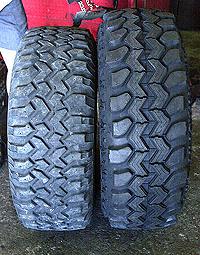 |
| In a side by side comparison, the 37" Super Swamper SSRs dwarf the 35" General Grabber M/Ts. You can also see the sipes cut in the center tread lugs of the SSR. |
Another BIG plus is they look great! With a 4" suspension lift, an F350 needs more than a 35" tire to fill the wheel wells. The 37" SSRs fit without any modifications on my truck, which is equipped with Superlift's 4" diesel kit. With their higher pressure they raised the truck two inches higher than it sat shod with the 35s. While clearances are tight, they don't rub or bind even during some pretty hard core wheelin' in the sand dunes at Glamis.
How Did They Do Off- Road?
Incredible! Fantastic! Better than I had hoped. The 35" Generals I had replaced, when aired down to 15 psi were unable to make it more than two thirds of the way up Oldsmobile Hill at Glamis before they dug in and I was done. The Super Swamper SSRs at the same pressure got me to the top without a glitch.
For those of you unfamiliar with Olds Hill, it's a 600 foot face of blow sand that has an angle of about 30 degrees. Not the kind of hill you scoff at with an 8,000 lb. truck.
My Recommendation?
Since these tires Interco sent me are Skunk Werks (Secret test mules.) and were used to complete the DOT testing of this new tire, and they won't be available to the general public for a couple months. I'll suggest you get down to your local dealer and get your name on the list! These tires are the only serious shoes available for lifted 3/4 and one ton trucks. In the interest of safety and performance, they are a MUST! A load range "C" or "D" tire is insufficient, period.
Click any image for blow up, or to get to the photo gallery.
Some Useful Data From Interco Tires...
CONDITIONS AFFECTING TIRE MILEAGE
There is always a trade off between performance and tread life in the development of tires. To gain one thing you have to trade off something else. Some brag when they get 15000 miles out of a set of tires because they understand how hard they drive while others complain if they get 40 to 50000 miles. The next paragraph explains many things someone can do to improve mileage regardless of how they drive, the type of tire, or the power of their truck.
Tread life is related to many factors some of which are; the air pressure maintained, how often air pressure is checked, rotation, driving habits, road surfaces, road conditions, suspension setup, caster and tow alignment, shock absorbers, etc. There is a relationship between the size tire used and the weight of the truck.. .the larger the tire and the lighter the truck the better the mileage tends to be and the smaller the tire and the heavier the truck the less the tread life will be. One of the worst mistakes made is neglect of air pressure. Air pressure should be checked at least once a month with an accurate gauge and checked when the tires are cool. Two things support the weight of a vehicle...the actual air pressure and the volume of air in a tire. When a big tire is used the larger volume of air will support the vehicle with very little air pressure but that does not mean the tire is stable. The tire will look like it is under inflated because it does not appear to be low but this low air pressure makes the tire unstable which causes squirming of the tread. It is OK to run tires low off road but the pressure should be bought back up as soon as you put the vehicle back on the highway. It is recommended that tires used on four wheel drive vehicles be rotated front to rear and rear to front about every four to five thousand miles...don't criss-cross.
As you can see from the above there is no way of knowing what tread life a given set of tires will have. The compounds used in the tread rubber also vary but is constant with each type of tire manufactured. Manufacturers try to achieve a balance in tread compounds that will provide good highway traction and overall performance while not sacrificing too much in tread life.
CAUSES OF TIRE WEAR
ROAD SURFACES:
Tires provide traction because the weight of the vehicle
forces the tread rubber into the road's small surface
irregularities. Unfortunately, that same interaction causes wear as
the surface tears microscopic pieces of rubber from the tread as it
slips into and out of contact with the road. And just as a coarser
sandpaper removes material faster, a coarser road textures cause
more tire wear. The following mileage estimate is typical of what a
40000 mile rated tire driven on smother asphalt would deliver if
driven exclusively on other road surfaces.
Smooth Asphalt . . . . . .40000 Coarse
Asphalt . . . . . . 36000
Concrete . . . . . . . . . . .28000 Extra Coarse
Asphalt . .24000
Country Road . . . . . . . 20000 Crushed Stone . . . . . . .
.8000
WHEEL ALIGNMENT:
Wheel alignment controls the distribution of vehicle
load across the tire's footprint. Camber is the tire's tilt inward
(negative) or outward (positive) when viewed from the front and has
significant impact on handling and should wear. Caster is the angle
of steering axis tilt when viewed from the side and while it does
not affect wear, it does affect the vehicle's handling and tendency
to track straight down the road. Toe is the direction that the
tires are aimed when viewed from above. Toe-in is when the tires
are pointed towards each other; toe-out is when the tires are
pointed away from each other. Toe greatly affects tire wear since a
setting just 1/16 of an inch off will make the tires want to travel
sideways about 150 feet every mile.
DRIVING STYLE:
The way you drive your vehicle - passively or aggressively -
can greatly impact wear.
TIRE BALANCING
Tire out-of-balance is usually in the tread area (A), see illustration, since the tread is the heaviest part of the tire and the part farthest away from the center of the axle. In the illustration, (A) represents the heavy spot; in the example let's say it is 5 ounces. (B) is the area of the rim where weights are usually applied. (C) is the center of the axle, (D) is the diameter of the rim, (E) is the diameter of the tire and here we are using a 34 inch diameter tire for the example. Area (A) is 17 inches away from the center of the axle (a 34 inch diameter tire divided by 2 equals 17 inches) and area (B) is 7 1/2 inches away from the center of the axle (a 15 inch rim divided by 2 equals 7 1/2 inches).
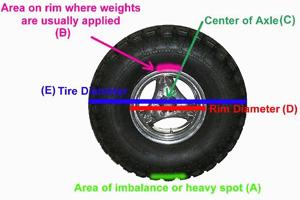 |
|
The complex trigonometry of proper tire
balancing. |
The best way to overcome this situation is if you were to determine the heavy spot of the tire (in the illustration it is 5 ounces) before it was mounted and place a 5 ounce internal 'balance patch' or 'dough compound' directly opposite the 5 ounce heavy spot by gluing the 'balance patch' to the inside of the tire which would be placing the 'balance patch' (weight) very close to the 17 inch radius from the center axle point it would require only about 5 ounces of 'balance patch' to properly balance the tire. After this would be done and the tire mounted on the wheel the entire tire and wheel assembly could be put on a balancing machine to correct for any imbalance in the wheel itself or some minor dynamic imbalance that may be present. None of these procedures will give satisfactory results if the rim is warped or has too much run-out to begin with.
We hope this information helps you in understanding some of the factors involved in proper balancing and that a tire is never 'out of balance' as much as the number of ounces of weight required to 'balance' it using conventional balancing equipment.
MAINTENANCE
The things you can do to assure getting the long life built into the Super Swamper SSR tires are:
1) Keep your truck in good mechanical condition and do not run with worn out shocks.
2) Maintain the proper air pressure for your driving and load conditions. Check the air pressure once a month with a GOOD accurate air gauge. Two things support the weight of a vehicle...the volume of air and....the airs pressure. With big tires the large volume of air in the tire will SUPPORT the vehicle but the tire will not be stable...the tire will look OK but when running on the highway at high speed it will wiggle and squirm which the tire is not designed for and it will not deliver near the mileage it could with the proper inflation pressure. This is not important when running off road because you don't have the speed plus the ground is softer than the tire but when you get back on the highway you should bring the pressure back up again to whatever pressure you have determined is best for the loads carried and your driving habits. Big tires will almost always LOOK like they have enough air when actually they may not for highway driving. So don't just kick your tires...check them. If you want to see what we mean try letting the air pressure down to 12 pounds or so...you probably won't be able to notice anything abnormal unless yours is a very heavy truck...but the tire, at 12 PSI is seriously under inflated for highway service.
3) Rotate the tires front to back and back to front about every four to six thousand miles, do not criss-cross, keep the tires on the same side of the vehicle. This practice will help to even out the uneven wear that often shows up on the front tires' outer lugs from hard cornering or a lot of in-town driving.
In closing, I cannot stress how important a safety issue the proper rating of tire is. The Ford/Firestone debacle is a prime example. Those accidents were not caused by defective tires, rather by overloaded, under inflated and poorly maintained tires operated at excessive speeds. With the explosion of big truck sales more and more people are lifting these heavy vehicles and running large tires. Don't be a statistic. Get the proper rated tire for your application.
For more information on Interco Tires or to find a dealer near you...
Interco Tire Corp.
P.O. Box 6
Rayne, LA 70578-0006
http://www.intercotire.com
Phone: 337-334-3814
Fax: 337-334-9796
Mounting services provided by:
Big O Tires
Troy Noxon, Manager
3303 South Jones Blvd.
Las Vegas, NV 89146
http://www.bigotires.com
702-873-6410
Fax: 702-221-8118

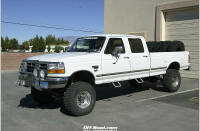
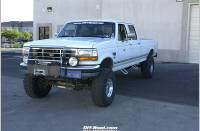
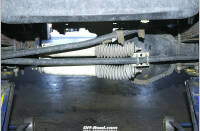
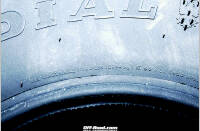
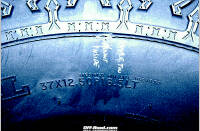
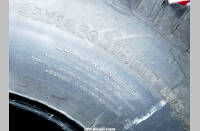
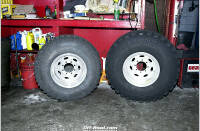
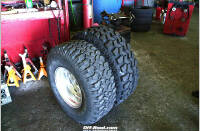
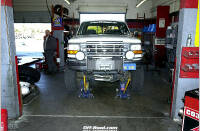
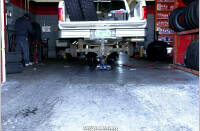
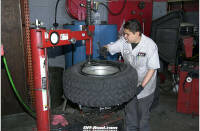

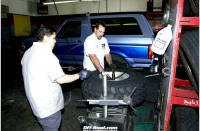
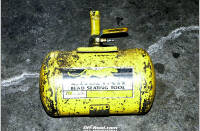
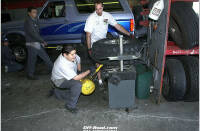
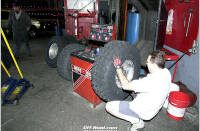
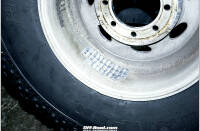
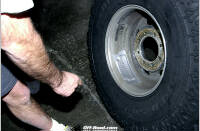
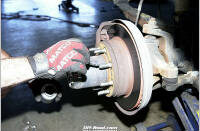
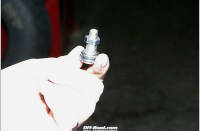
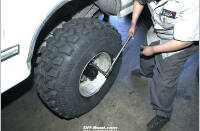



 Your Privacy Choices
Your Privacy Choices